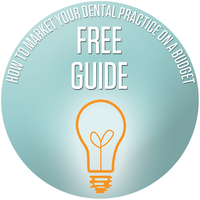
The American Academy of Pediatric Dentistry (AAPD) defines special health care needs as “any physical, developmental, mental, sensory, behavioral, cognitive, or emotional impairment or limiting condition that requires medical management, health care intervention, and/or use of specialized services or programs. National Center for Health Statistics claims that one in five persons within every age, race, gender, and sexuality report having a limitation that substantially impact their daily activities. Oral health is a pillar of a person’s overall well-being, but many people with disabilities struggle to find a dental office that is accessible to them.
The obstacles those with disabilities have in obtaining accessible dental care include: transportation or parking issues; inaccessible exam equipment; narrow or small offices; absence of a support person; denial of American Sign Language (ASL) interpreters; inaccessible paperwork; confusion about medical instructions; trauma triggers; and negative attitudes and ignorance about disability.
What do we mean by accessibility?
The ADA guidelines state that medical and dental practices must offer “full and equal access to their health care services and facilities.” This includes physical access, communication access, and both mental and emotional access.
Physical Access: refers to a person’s ability to get to a dental facility, through the entrance, into the exam room, and onto the exam equipment without significant barriers.
- To help those who use mobility devices such as walkers, canes, or wheelchairs, your dental office should have accessible parking, ramps, wide doorways, accessible restrooms, waiting areas, and exam equipment. Additionally, physical access includes scent- and fragrance-free policies, as well as policies that allow for service animals.
Communication Access: refers to a person’s ability to receive all the information needed to make decisions regarding their healthcare. This encompasses print and auditory information before, during and after the appointment.
- People who are blind or have low vision need alternative formats for written communication, including large print or braille. Provide image descriptions and audio email information in accessible formats.
- People who are deaf or hard of hearing need communication aids, including American Sign Language interpreters. If you or your staff cannot communicate in ASL, offer the patient a text document they can read before their appointment describing what will happen during their visit. Also offer an assisting listening device, and email or website options for making appointments.
- Deaf patients tend to be skilled in reading lips and they find it difficult to read their dentist lips when they have them covered with a mask during their procedure. We recommend using a clear mask so the patient can see you alert them when the procedure is starting.
Verbally narrating the actions and steps of the procedure benefits people with multiple kinds of disabilities. Name the instrument that is about to be used — for example, saying “Drill ready, or scraper ready” — so that your patients who are unable to see can still know exactly what to expect. For patients who can’t hear, try using cues by either using sign language or lip reading.
Mental and Emotional Access: refers to a person’s ability to engage effectively with his or her care by being fully present and mentally processing or remembering information.
- People with mental and emotional disabilities (including learning disabilities, developmental disabilities, mental health conditions, and traumatic brain injuries) may need accommodations, or in some cases a support person, in order to feel grounded or emotionally supported during appointments.
- Accommodations can include allowing a patient to use coping tools, such as, listening to music or covering them with their favorite blanket.
- Also, adjusting lights and minimizing sounds, by providing patients with sunglasses and noise cancelling headphones.
As a dentist, it is important to have effective communication to build a positive relationship between you and your patients. It builds trust in every step of a patient’s experience before, during, and after the procedure. When patients know that a dentist cares about them, they feel comfortable expressing themselves, and that empowers the patient to be active in seeking health care and contributing to the decisions in their own care.
Delivering oral care to patients with disabilities requires adaptation of the skills you use every day. Most people with disabilities can be treated successfully in the general practice setting. As a dental professional you also need to be aware of the special challenges – behavioral, physical, and cognitive – that someone who arrives at the dental office with disabilities may have. Providing proper accessibility and following these tips to meet the unique oral health needs of people with disabilities will help you be successful in delivering care to these patients. Need more information? Download our checklist and see if your practice is accessible to the disabled.



